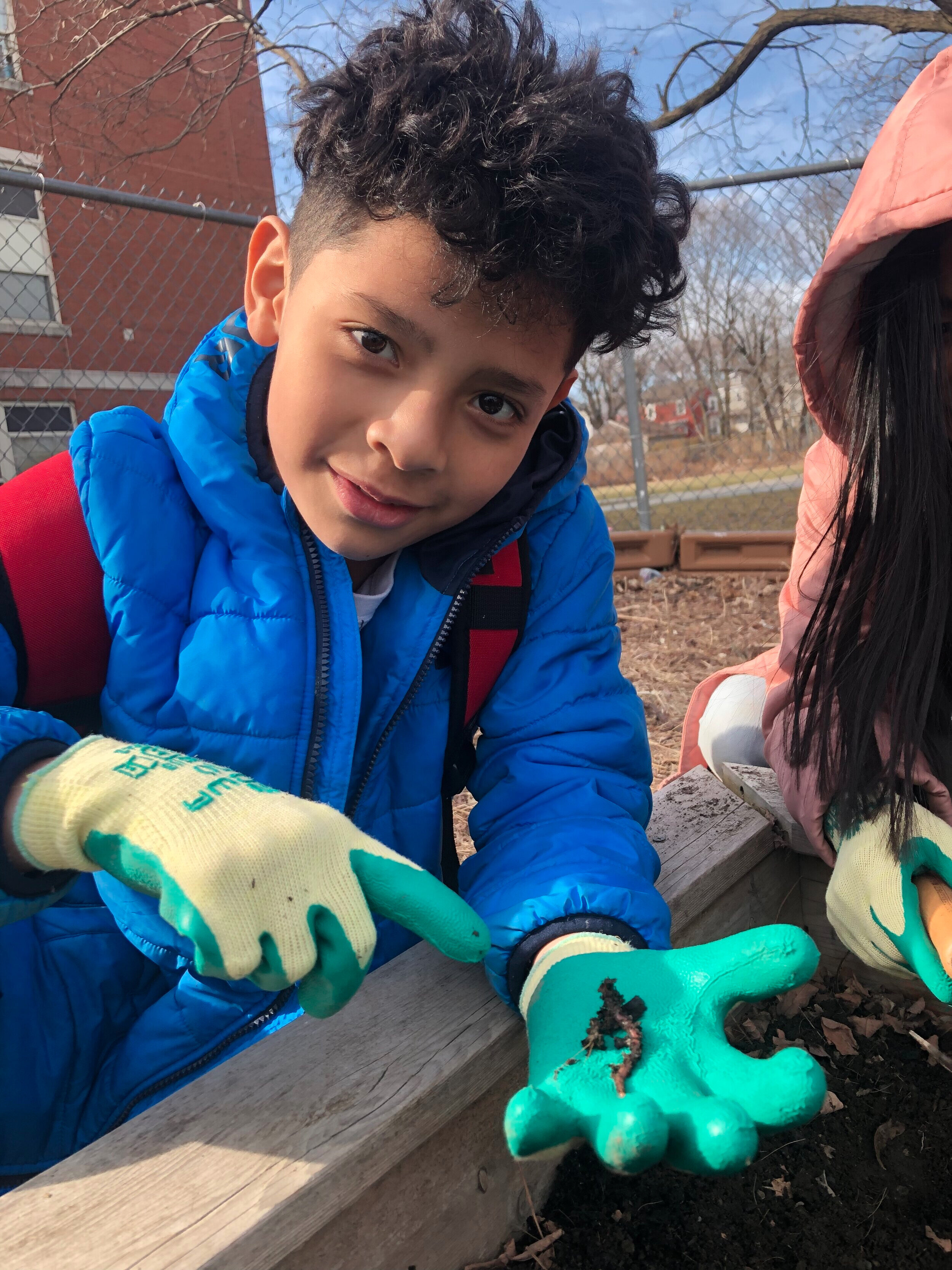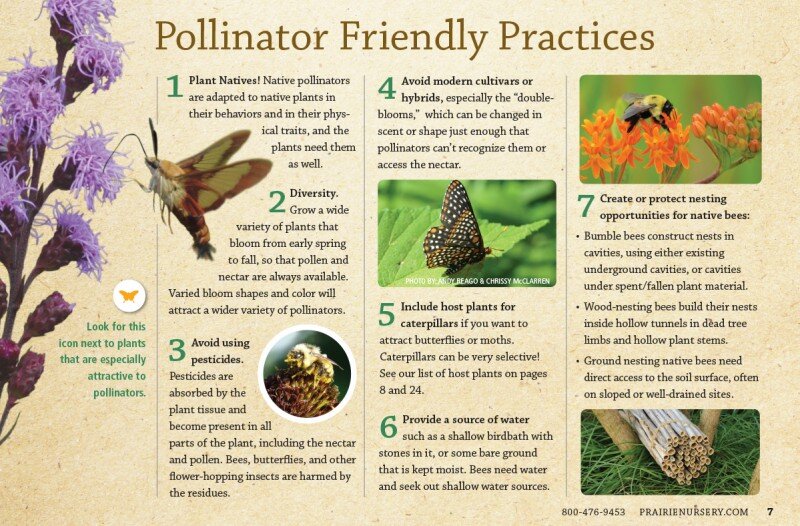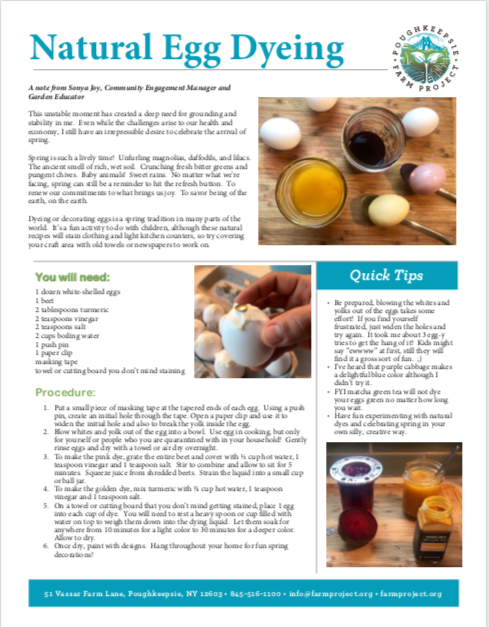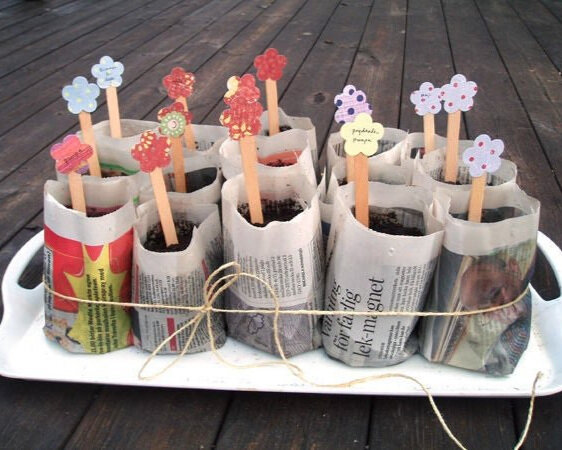By Kathryn B. and Sonya Joy
April is National Garden Month and we have lots of fun family-friendly ways to celebrate Earth Day and Garden Month while staying safe at home! One thing we can all do is start getting our gardens ready, so we’ve also got a few tips to reuse things to grow your own food from seed and ways to make your garden more Earth-Friendly.
Morse Worm Garden
If you’re looking for a reading suggestion to cure your boredom, Acadia Tucker’s newest book “Growing Good Food: A Citizen’s Guide to Backyard Carbon Farming,” tackles sustainable gardening practices to help do your part for the planet. The book is inspired by the idea of Climate Victory Gardens, pulling from the war-time Victory Gardens, a term coined by George Washington Carver, for gardens used to support self-sufficiency during periods of food rationing. It’s a great read to learn the basics of cultivating healthy soil and “farming” carbon, whether you want to start incorporating regenerative methods or dig into permaculture design.
Don’t forget about last month’s Ag Literacy book recommendations, which will soon be posted in video form on our social media accounts!
Need a fun project? We’ve got you covered:
Grow a Vegetable Garden:
Planting a diverse selection of fruits and vegetables helps build healthy soil, minimize pest and disease issues, and gives you a consistent bounty of fresh produce!
Plant nitrogen-fixing vegetables like beans and peas to decrease your fertilizer needs.
Perennials like Asparagus, Rhubarb, Strawberries and Raspberries all build healthier soil. There are many perennial herbs like chives, lavender, mint and rosemary to add diversity.
Root vegetables like carrots, radishes and turnips aerate the soil. Plus, the whole plant is edible, not just the root!
Add organic matter and compost regularly, and mulch to decrease watering in hot summers!
Interplant quick growers like lettuce and beans with your cucumbers, tomatoes or corn to save space and keep the soil shaded. The 3 sisters, corn, bean and squash are a great example.
Farm carbon and make new healthy soil with sheet mulching or Hugelkultur mounds:
Plant a Pollinator Garden:
Beyond growing your own food, you can also help the bees out by planting a pollinator garden with colorful flowers! Native plants and perennials should be your focus to be the most earth friendly and to provide lots of food sources for bees, butterflies, birds and other pollinators that we all need to grow our favorite foods.
Attract all types of pollinators with colorful perennials like Bee Balm, Swamp Milkweed, and Butterfly Weed!
Herbs like Lavender, Chamomile and Anise Hyssop have multiple uses - as herbal teas and fragrant pollinator attractors!
Celebrate Spring with Natural Dyed Eggs
Looking for a way to celebrate Spring with things you already have at home? Use your beets and turmeric powder to dye eggs! For this fun activity, you’ll just need your plant-based dyes and some household items to share this special tradition with the whole family! Follow directions and get more ideas from Sonya Joy on this handout.
Make Recycled Newspaper Planters
Reduce, Reuse and Recycle in the garden! April is when many seeds will get started here in New York. Why not start seeds with reused materials? Making seed pots out of old newspapers is not only a thrifty use of old newspapers, but also good for the planet: newspaper is biodegradable, and provides a mulch and fertilizer for young plants as it breaks down.
Build a Worm Bin
Recycle your food scraps into dirt! You can opt to build your own worm bin or purchase one to start Vermicomposting (that’s composting with worms!). The “worm castings” left by the worms will make free, rich fertilizer for plants in your garden!
WORM BIN TIPS:
To use a plastic storage bin or recycled plastic container, drill holes in the top for ventilation. You may want to cover the holes with some screening to prevent the worms from escaping
Drainage is key: drill a hole toward the bottom of the bin to drain liquid out of the composter. Worm bins need to stay damp, but not wet.
Use shredded recycled paper / newspaper for worm bedding.
Feed your worms fruit and vegetable scraps, shredded paper, coffee grounds, eggshells, plain rice, pasta or bread. Avoid food scraps that have oils or dressings as well as animal products like dairy, meat or bones.
Not all worms are suited for recycling waste / living in this situation; consider using Red Wigglers, who live in decaying organic matter instead of soil. Earthworms do not do well in the worm bin!







